CHELTENHAM, ENGLAND - Pretty Cotswolds towns filled with honey-coloured limestone cottages flash by as we make our way along narrow back roads in the direction of this regal spa town.
Idyllic emerald pastures dotted with white sheep, which for centuries have been providing the valuable wool to support this area’s world famous textile industry, make it hard to concentrate on the road ahead.
Cheltenham is just one of the many iconic English towns you’ll come across on a drive through the Cotswolds – Bath Shakespeare’s Stratford-upon-Avon, Gloucester and Oxford are the area’s more famous cities and towns but small ancient hamlets like Bibury, Stow-on-the-Wold and Chipping Campden are equally thrilling to visit.
The Romans liked it here and set up many settlements throughout the Cotswolds. Bath may be the most famous, but Chedworth and Cirencester, often called the “Capital of the Cotswolds” are other treasure chests of Roman relics.

Above: Blenheim Castles is one of the most historic buildings in England because it was where Winston Churchill was born.
It’s late afternoon on a Saturday when we pull into Cheltenham, the garden city which became a fashionable place to visit in the 18th century when thermal waters were discovered here in 1790. The main walking street is filled with shoppers buying fashions made with local wool and a festive mood hangs in the air. Maybe that’s because Cheltenham holds more annual festivals than any other place in England.
A visit by King George III cemented this city’s reputation as a vacation town and now its world famous horse races, spas, historic promenade, squares and regency town homes keeps people coming back.
We find our hotel – The George – and are instantly impressed with the area’s surroundings; the hotel sits on the edge of the fashionable Montpellier district.
The contemporary property, set within a classic Georgian building, has undergone a major facelift in recent years and the large rooms filled with modern conveniences, comfy beds and oversized modern bathrooms, are a real treat.
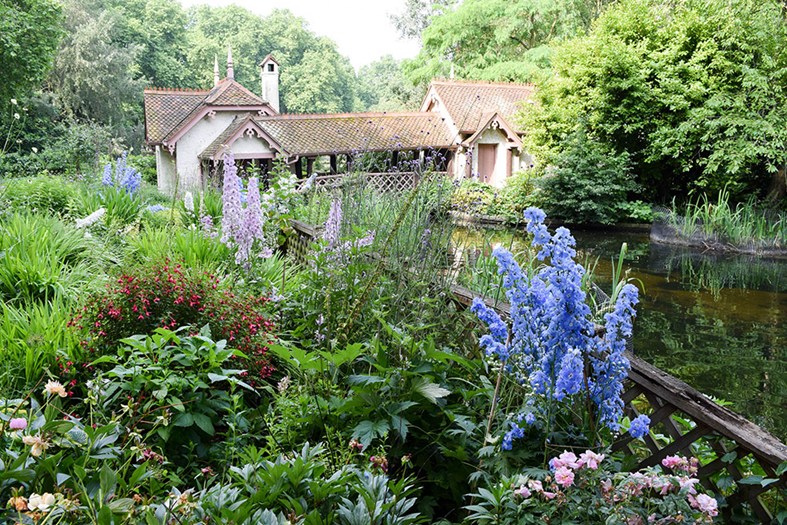
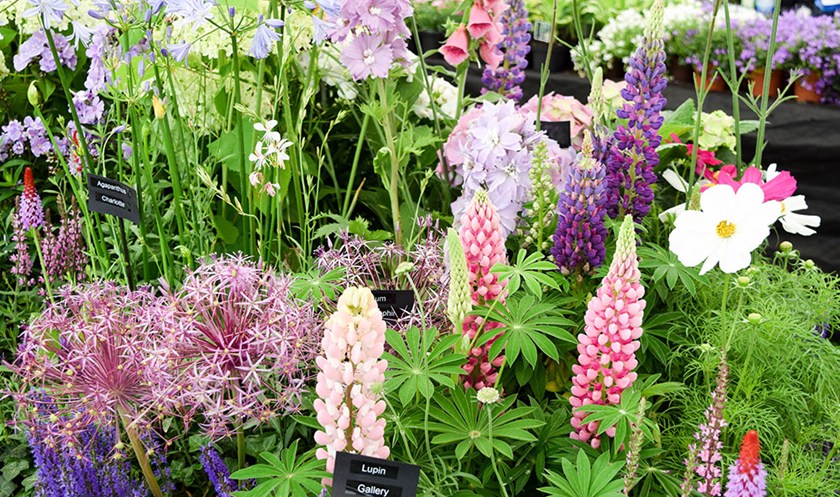
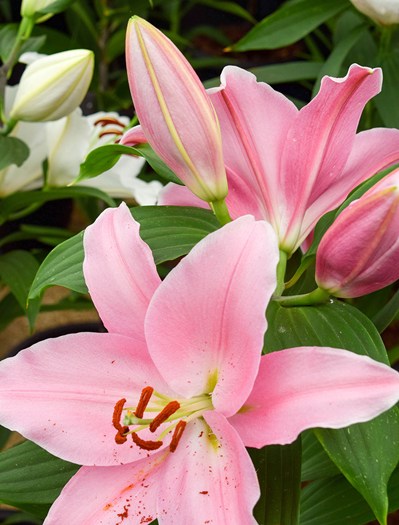
Above: The Cotswold is dotted with lovely towns and cottages and everywhere you look there's a flower show on display.
We notice the hotel’s restaurant, Monty’s Brasserie, is attracting a lot of attention, so we decide to pull up a chair in a room that’s been awarded two AA Rosettes in the past five years. When our perfectly prepared and presented Cotswold lamb dish arrives, we quickly understand why Monty’s is so popular with diners and critics alike. The courteous, friendly servers are full of suggestions on where we should explore after dinner but they all agree we should start with Montpelier, the town’s most fashionable area.
Filled with bars, pubs and restaurants, the district has always been a magnet for visitors. This is where the most beautiful Regency-era buildings and hotels can be found and the nightlife here is infectious. Soon we’re chatting with locals about what route we should take to get to Oxford next day.
“The A40 is the most direct route, mate,” one punter chimes, “but it’s not very pretty. Your best route would be to cut off the A40 at Northleach onto the A429. That will take you through some very lovely towns and villages – all very historic.”
Up early next morning we take the man’s advice and soon find ourselves on the A429, a road lined with ancient oaks whose branches stretch across the scenic route. We come across towns with lyrical names like Bourton-on-the-Water, a 4,000-year-old settlement, Moreton-in-Marsh, which travellers have been using as a stopover on their way to Oxford for more than 1,700 years, and Stow-on-the-Wold, the highest town in the Cotswolds, where we make a brief stop.
The small market town is empty in the early morning but its vast market square will soon be filled with lots of people snapping photos and buying local souvenirs. At the height of the wool industry, Stow-on-the-Wold’s main square was a busy place as upwards of 20,000 sheep were sold in one day here back then.
In 1646 a major battle was fought in Stow and it was so fierce that reports of the day described “blood flowing down Digbeth Street.”
At one end of the square stands a large cross made of Cotswold limestone and at the other are the town stocks, shaded between an old elm tree – testimonials to the town’s past importance.
Lots of lovely Cotswold townhouses surround the square and you could spend hours just wandering the narrow streets leading off the market. But there’s a schedule to keep, so back on the A429 we jump and at Moreton-in-Marsh we veer onto the A44 headed for Oxford.
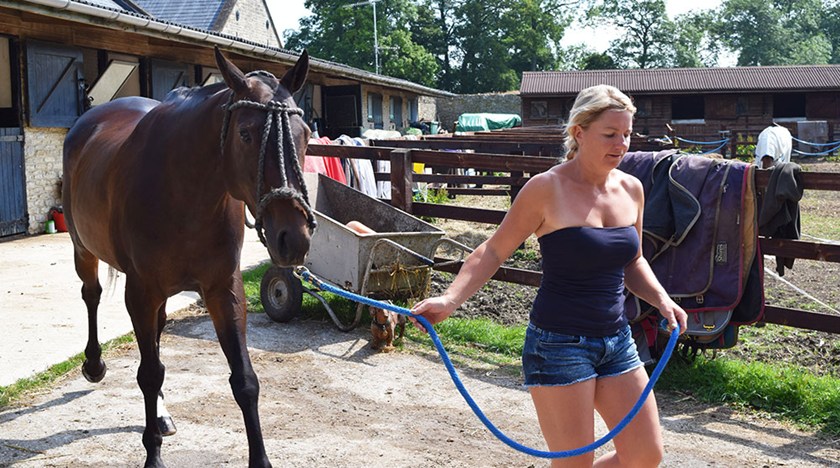
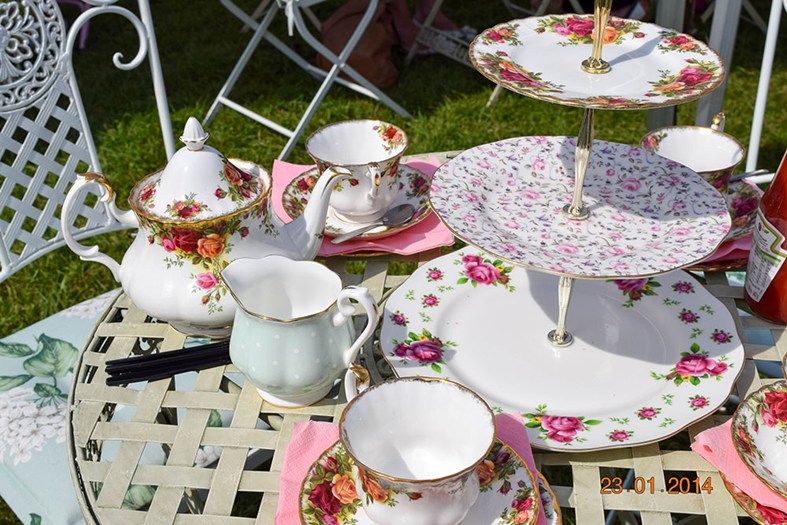
Above: England's elite come here to ride their horses and enjoy afternoon tea in a Garden of Eden setting.
At Chipping Campden we find homes that were built in the 14th and 15th century. The most famous is the National Trust Hidcote just outside town whose famous gardens draw people from all over the world.
One of the loveliest of all the Cotswolds towns is historic Woodstock, whose most famous son was Sir Winston Churchill. The great world statesman and World War II hero was born in Woodstock’s massive Blenheim Palace, which is often referred to as Britain’s greatest palace.
Woodstock is another market town filled with lots of honey-coloured homes that are only found in this area of England. Its main street is crowded with quaint tea rooms, ancient pubs and unique art shops and there’s plenty of evidence the Romans were the first tourists here.
But it’s Blenheim and its meticulous grounds that draw the most attention.
We’re lucky. A flower show is being held on the grounds outside the palace and local gardeners are showing off their loveliest blooms. The World Heritage site Blenheim is often used for such purposes but the annual flower show draws the most visitors from far and near.
“If you think the flowers here are beautiful, wait until you get inside the palace grounds,” teases one of the local exhibitors.
Described as a “country house”, this monumental palace, which has been home to the Dukes of Marlborough since 1705, was a gift to John Churchill, the first Duke of Marlborough from a grateful nation for his trump over the French at the Battle of Blenheim.
Its Baroque English architecture is unique only because the style did not catch on so it’s become one of the few examples in the world. The palace fell into disrepair in the 19th century and was only saved from ruin when the 9th Duke of Marlborough married wealthy American Consuelo Vanderbilt, whose railway money brought the palace back to life.
While the palace buildings are stunning – their golden stone exteriors literally glitter when the sun highlights them – it’s the gardens that truly impress here. The formal gardens we see today were designed by French architect Achille Duchêne in the 1920s and they rank among the finest in Europe, if not the world.
Blenheim’s gardens are divided into sections:
- The Water Terraces, constructed between 1925 and 1930, are reminiscent of the Parterre d’Eau at Versailles and at its lowest terrace stands a scale model of Bernini’s famous fountain in the Piazza Novona in Rome.
- The ornate Italian Garden, the Duke of Marlborough’s private retreat, is open to the public at certain times and its box hedges, each trimmed using the time-consuming method of employing string as a cutter, are meticulous and beautiful.
- The Secret Garden, restored to its original glory in 2004 to commemorate the tercentenary celebrations of the Battle of Blenheim, is in a secluded area of the palace and features winding paths and lovely stone bridges that cross water filled with swans.
- The Rose Garden is a sea of flowers and the area is always perfumed with the scent of rose. The garden’s central statue is surrounded by symmetrical beds of roses that are truly stunning. A short walk away is the hidden Temple of Flora which was designed by the palace’s original gardener, the legendary Lancelot Capability Brown (he also designed the garden at Highclere Castle, featured in the hit TV series Downton Abbey).
- The Pleasure Gardens are dedicated to families and we see lots of little ones gleefully dancing in the meadows and rolling in the grass.
- The Formal Gardens are surrounded by magnificent park landscape which was set out in Brown’s original design. It’s easy to see why this setting inspires so many TV and movie companies to film at the palace.
The most imposing monument on the palace grounds is the Column of Victory, which was erected to commemorate the Battle of Blenheim. The south face contains the accounts of that victory and on the opposite side reads the text of the act of parliament granting the estate to the Duchy of Marlborough.
Tours are offered of the palace and its great art works, massive dining halls and stately bedrooms give you great insight into one of England’s most privileged and revered families.
Our last stop at Blenheim is the stables. The palace is home to international horse trials each year and we’re allowed to wander the barns and pat the horses thanks to some hospitable groomers.
We pull out of Blenheim’s entrance and a short time later we enter historic Oxford where our Cotswolds drive ends, a drive through living history that makes us understand and appreciate this glorious region of England.
Information
The George Hotel is located on St. George’s Road. For information, go to
www.stayatthegeorge.co.uk/ Blenheim Palace is open from 10:30 a.m. to 5:30 p.m. daily and the formal gardens are open at 10 a.m. The Pleasure gardens are open until 6 p.m. Admission to the palace, grounds and gardens is about $50 Cdn. If you just want to visit the park and gardens, you can buy a ticket for about $26. For more information, go to
www.blenheimpalace.com/ For more on the Cotswold and its highlights, go to
www.visitbritain.com / Air Canada, British Airways and a host of charter airlines offer daily flights to England from Toronto, Ottawa, Montreal, Calgary and Vancouver